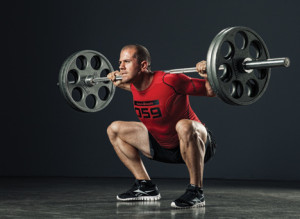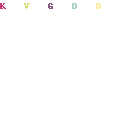Maxing out with a 1RM Squat Daily (*study)
We’ve all seen the high-school kid who just started training and maxes out on the bench every time he lays his head on it. He usually gets a bit stronger despite himself. But if an advanced lifter tried that, progress would stall, then go backwards, then we’d probably see an injury, right? Well, maybe not – according to a study published in
The article is a case series – which is a little more than a case study (the former happens to use three subjects, while the latter uses one). Here, three competitive powerlifters (who’d been training for at least five years) performed a 1RM back squat for37 consecutive days. That wasn’t their whole workout, however, on days 1-35, they followed their 1RM with 5 vsets of 3 repetitions at 85% or 2 repetitions at 90% of the daily 1RM, and on day-36, they performed 1 set of 1 repetition at 85% of day-1 1RM. On day 37, a final 1RM was performed.
The first powerlifter ended up gaining +5kg/2.3% on his squat by day 37, but at an earlier point in the training cycle, he actually managed a +12.5kg/5.8% increase – meaning he gained strength by the end, but less than if he’d cut the training cycle shorter (at the point where he was up 12.5kgs).
The second powerlifter recorded a 13.5kg/10.8% increase in 1RM from both day-1 to day-37 and day-1 to peak, meaning he actually was his strongest by day 37.
The final powerlifter was also strongest on day 37, and managed a 21.0kg/9.5% increase.
Pretty interesting, even if they only had three test subjects and not a lot of statistical power. Here’s the abstract:
Efficacy of Daily 1RM Training in Well-Trained Powerlifters and Weightlifters: A Case Series
Introduction: The purpose of this study was to investigate the efficacy of daily one-repetition maximum (1RM) training of the back squat on maximal strength. Methods: Three competitive lifters performed the squat for 37 consecutive days and are reported as individual cases. Participant 1 (P1) (body mass=80.5kg; age=28yrs.) and participant 3 (P3) (body mass=108.8kg; age=34yrs.) were powerlifters; participant 2 (P2) (body mass=64.1kg; age=19yrs.) was a weightlifter. Each participant had at least 5yrs of training experience with the squat. During days 1-35, participants performed a 1RM squat followed by 5 volume sets of 3 repetitions at 85% or 2 repetitions at 90% of the daily 1RM. On day-36, participants performed only 1 set of 1 repetition at 85% of day-1 1RM; and a final 1RM was performed on day-37. Results: Absolute and percent changes for P1 from day-1 to day-37 were +5kg/2.3%, and from day-1 to peak (greatest 1RM of the period) were +12.5kg/5.8%. P2 experienced a 13.5kg/10.8% increase in 1RM from both day-1 to day-37 and day-1 to peak. P3 demonstrated a 21.0kg/9.5% increase from both day-1 to day-37 and day-1 to peak. All 3 participants exhibited significant (p<0.05) correlations between time (days) and 1RM (P1: r=0.65, P2: r=0.78, P3: r=0.48). Conclusions: Our findings suggest that daily 1RM training effectively produced robust changes in maximal strength in competitive strength athletes in a relatively short training period.



